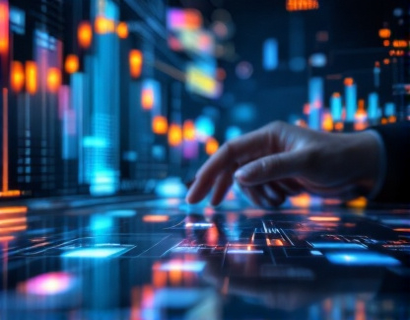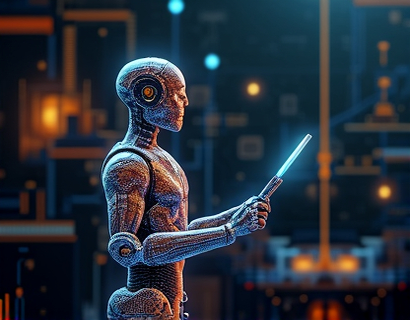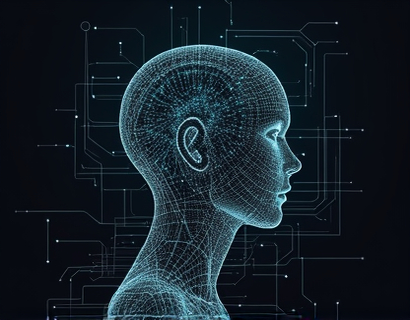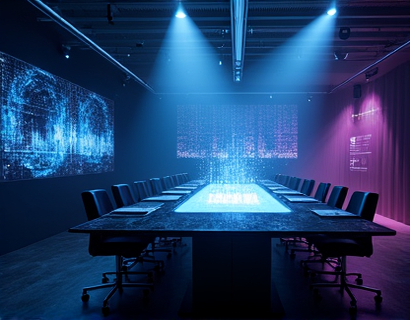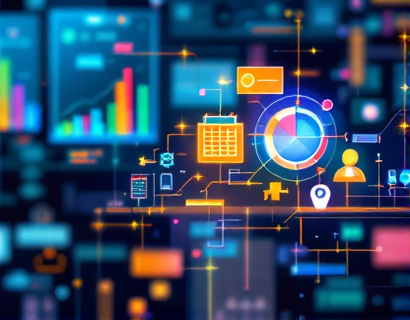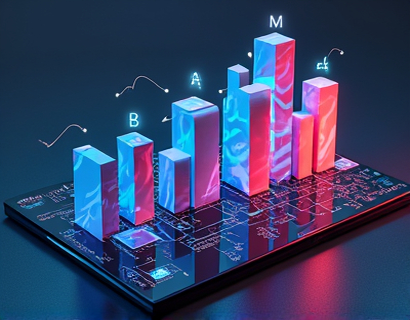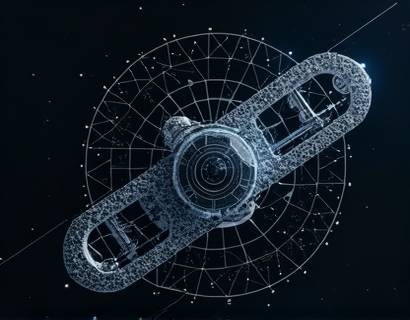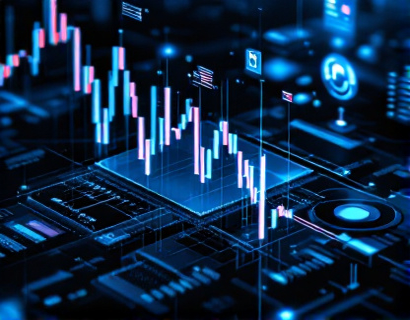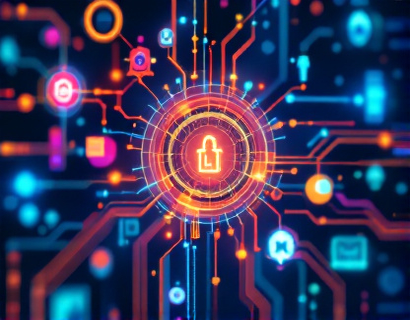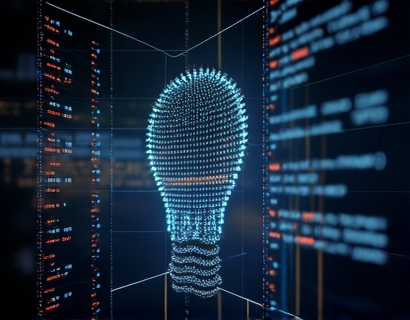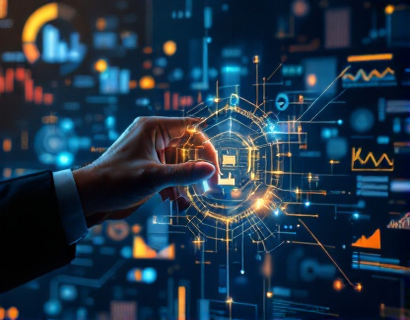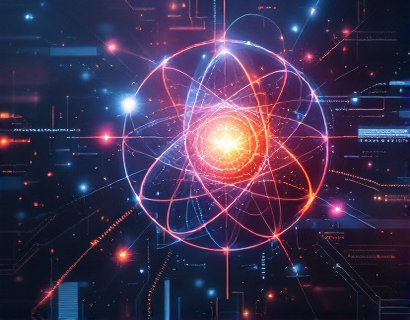Unlocking Next-Gen Digital Transformation: Harnessing AI and Blockchain for Innovative Solutions
The digital landscape is undergoing a profound transformation, driven by the convergence of artificial intelligence (AI) and blockchain technology. This synergy is not just a trend but a fundamental shift that promises to redefine how businesses operate, innovate, and deliver value. By merging the power of cryptocurrency and machine learning, organizations can unlock new levels of efficiency, security, and innovation, providing a competitive edge in an increasingly complex and dynamic environment.
At the heart of this transformation is the integration of AI and blockchain, two technologies that, when combined, create a powerful ecosystem capable of addressing some of the most pressing challenges faced by modern enterprises. AI brings intelligence, automation, and predictive capabilities, while blockchain offers transparency, immutability, and decentralization. Together, they form a robust framework for digital transformation, enabling businesses to streamline processes, enhance security, and create novel services and products.
Enhancing Efficiency Through AI and Blockchain
One of the primary benefits of combining AI and blockchain is the significant improvement in operational efficiency. AI can automate routine tasks, reduce manual errors, and optimize resource allocation, while blockchain ensures that these processes are transparent and tamper-proof. For instance, in supply chain management, AI can predict demand, optimize inventory levels, and automate logistics, whereas blockchain can provide a secure and immutable record of transactions, enhancing traceability and accountability.
Consider a manufacturing company that uses AI to monitor equipment performance and predict maintenance needs, reducing downtime and maintenance costs. By integrating blockchain, the company can create a decentralized ledger of maintenance records, parts usage, and performance data. This not only ensures that all stakeholders have access to real-time, accurate information but also prevents any unauthorized alterations, thereby enhancing trust and efficiency.
Boosting Security with AI and Blockchain
Security is a critical concern in the digital age, and the combination of AI and blockchain offers a robust solution. AI can detect and respond to threats in real-time, identifying patterns and anomalies that traditional security systems might miss. Blockchain, with its inherent security features, ensures that data is stored in a decentralized and encrypted manner, making it extremely difficult for malicious actors to manipulate or steal information.
In the financial sector, for example, AI-driven systems can monitor transactions for suspicious activity and flag potential fraud in real-time. When combined with blockchain, these transactions are recorded on a distributed ledger that is immutable and transparent. This dual approach not only enhances security but also builds customer trust, as users can verify the integrity of transactions and the security of their data.
Driving Innovation Through AI and Blockchain
The synergy of AI and blockchain is not just about efficiency and security; it is also a catalyst for innovation. By leveraging these technologies, businesses can develop new products and services that were previously unimaginable. For instance, in the healthcare industry, AI can analyze vast amounts of medical data to identify patterns and predict patient outcomes, while blockchain can secure and manage patient records, ensuring privacy and compliance with regulations.
A practical example is the development of decentralized health records, where AI algorithms process and analyze medical data to provide personalized health insights, and blockchain ensures that these records are secure, accessible only to authorized parties, and tamper-proof. This not only improves patient care but also empowers individuals to have control over their own health data.
Case Studies: Real-World Applications
Several organizations have already begun to harness the power of AI and blockchain to drive digital transformation. One notable example is a logistics company that implemented an AI-powered system to optimize routes and reduce fuel consumption, while using blockchain to create a transparent and secure record of shipments. This not only improved operational efficiency but also enhanced customer trust through transparent tracking.
Another example is a financial services firm that uses AI to automate KYC (Know Your Customer) processes and detect fraud, with blockchain providing a secure and auditable ledger of customer interactions and transactions. This combination has significantly reduced processing times and increased compliance with regulatory requirements.
Challenges and Considerations
While the potential benefits are substantial, integrating AI and blockchain also comes with challenges. One of the primary concerns is the technical complexity involved in implementing these technologies. Organizations need to invest in skilled personnel and robust infrastructure to ensure seamless integration. Additionally, there are regulatory and compliance issues to consider, as both AI and blockchain are still evolving fields with varying levels of regulation across different regions.
Another challenge is the need for standardization. For AI and blockchain to reach their full potential, there must be industry-wide standards for data formats, protocols, and security measures. This will facilitate interoperability and collaboration between different systems and organizations.
Future Outlook: The Next Generation of Digital Transformation
As AI and blockchain continue to mature, their integration will become even more seamless and widespread. The next generation of digital transformation will see more sophisticated applications, such as smart contracts powered by AI to automate complex business processes, and decentralized AI models that leverage blockchain for data sharing and model training without compromising privacy.
The future also holds the promise of more user-centric solutions, where individuals have greater control over their data and digital identities. With AI and blockchain, users can securely share information, verify identities, and engage in transactions with confidence, knowing that their data is protected and their rights are respected.
In conclusion, the combination of AI and blockchain represents a revolutionary approach to digital transformation. By enhancing efficiency, security, and innovation, these technologies offer a competitive advantage in the rapidly evolving digital landscape. Organizations that embrace this synergy will be well-positioned to lead the way in the next generation of digital innovation.



